#satoshi mizoguchi
Text
Two Flavors of Japanese (BL) Cinema
Recently I came across a post that proposited that Japanese cinema hadn't changed since the 1950's and came in, essentially, two types.
Let's discuss that.
I can’t go into the history of all Japanese cinema in a singular blog post like that’s just not possible, there’s literal books and classes you can take on this subject, and I will be linking further reading down at the bottom of the post so you can do just that.
This fact alone, should already disprove the point that Japanese cinema hasn’t changed since the 1950’s. Other than the fact that like, Japan isn’t a static society that is forever unchanging because human beings do not work like that.
Which is why I’m writing this essay at all.
I love cinema, I love storytelling and filmmaking. And, frankly, I may not be an expert but I am annoying. I own that.
Japanese cinema has held influence over many directors, writers, animators, and so forth.
Just watch this playlist of Sailor Moon references across various cartoons. Or how Satoshi Kon influenced the work of Darren Aronofsky and Christopher Nolan. Or how James Cameron and the Wachowskis were both influenced by Mamoru Oshii’s 1995 Ghost in the Shell. And then there’s Akira Kurosawa who’s been cited as a major influence for directors like: Steven Spielberg, George Lucas, and Martin Scorsese and a slew of others.
I want folks to know there’s a slew of amazing films from Japan and that distilling the industry - the blood, sweat and tears of its creators - to a strict dichotomy of this or that, either/or is disrespectful at best and xenophobic at worst.
It’s also just a shame because, like, guys there’s so many great films from Japan! There’s also probably a lot of great live action shows from Japan but I’m not super knowledgeable about them - I mainly watch anime so that’s not a great metric in terms of Japanese television - so I’m just talking about films in this post.
Ok so main points I’m gonna address:
Japanese Cinema hasn’t changed since the 1950s
Japanese film style falls under an extreme dichotomy of cinematic/sweeping (described as “atmospheric”) or cartoonish/slapstick (described as “live action manga”)
Baby does any of this have to do with BL? (no, but it IS more gay than you think)
With these four films: The Hidden Fortress (1958), Lady Snowblood (1973), Gohatto (1999), and Kubi (2023).
I picked these four because they’re all “period pieces” taking place feudal Japan - or with the aesthetics of feudal Japan, The Hidden Fortress nor Lady Snowblood aren’t based on actual historical events, like Gohatto and Kubi are, however loosely, but take place in an amorphous 15th to 18th century Japan - and I think they strongly show the development of this singular genre in Japanese cinema.
Plus the latter two films, Gohatto and Kubi, are gay as fuck and I know my people.
[you can also read this post on this blog post which includes additional links as tumblr has a limit and for easier readability as this is a long post]
The Hidden Fortress
youtube
Released in 1958, directed by Akira Kurosawa it’s probably the most well-known film on the list. It’s a film that exists within the “Golden Age” of Japanese cinema alongside films like Kurosawa’s own Seven Samurai (1954), Yasujirō Ozu’s Tokyo Story (1953) and Kenji Mizoguchi’s Ugetsu (1953).
It was also the era where, after the American Occupation post-WWII a boom of movie distribution took place with new film studios such as: Toho (y’all know them from any Godzilla movie ever made), Toei (if you know One Piece you know Toei but they’ve done a ton of films both animated and live action) and others.
The story is straight forward, two peasants, Matashichi and Tahei who bicker their asses off like an old married couple the entire film, happen upon a Very Hot Man with the Only Thighs Out (Toshiro Mifune was a BABE) named Rokurota and his companion a icy young woman named Yuki.
Matashichi and Tahei have just escaped like, a ton of ~circumstances that include failing to become samurai, being broke as fuck, getting captured and forced into servitude - don’t worry that lasted like 6 hours tops - and then find gold hidden in a stick on a mountain.
Turns out Rokurota has all the stick gold they could want! So they team up neither realizing Rokurota and Yuki are actually part of a clan that’s been recently wiped out and they’re on the run from a rival clan who has wiped theirs out. Yuki is the princess of said clan and it’s only survivor, while Rokurota is her samurai general and retainer.
Tahei and Matashichi, living in ignorance of these facts, try to steal the gold away from them because they live that hustle life until the end when all is revealed and Yuki grants them both with a gold piece to share (this is a really big piece of stick gold).
There’s other things that happen, like a fight scene between Rokurota and rival clan member, Yuki owning every single scene she in - I fucking love her - but that’s the gist.

The story is, again, pretty uncomplicated, it balances the comedy of Tahei & Matashichi with the stoicism of Rokurota and Yuki well, and all the acting is strong. In terms of its film style, by modern day standards it’s not especially “cinematic” Kurosawa doesn’t favor fanetic camera movements, his camera is often very still and the movement he employs is often in individual character ticks, and/or background set pieces. This film has a lot of great set pieces.
Kurosawa didn’t employ camera techniques like panning, he doesn’t really do extreme close ups, there's no swooping shots or fancy tricks, I’d say a majority of the camera shots in The Hidden Fortress are a combination of mid, and wide, with a few mid-close ups. One thing to notice is Kurosawa’s use of scene cuts; instead of a cut he used pan sweeps to change scenes. If you’ve ever watched a Star Wars film you know exactly what I mean.
The Hidden Fortress, first and foremost, is an action adventure film. It has more in common tonally with Top Gun Maverick or Star Wars A New Hope, in that it's straight forward, sincere, and grand in scale, grounded by a very honest set of characters who are strongly motivated.
I feel like in modern day discussions we association “action/adventure” films in a sorta of negative way; this is probably due, in part, to the oversaturation of the high budget blockbusters of the last ten years - oh MCU, how you’ve fallen - that are overly bombastic, overly complicated, overly connected, and the root of what audiences connect with - the characters - tends to be lost.

Scott Lang's motivations in Ant-Man and the Wasp: Quantumania are to protect his teenager daughter and the family he's built, which are simple, strong, and relatable character motivations. However, they got lost in the conventions of the plot, the frantic energy of the film, the simple amount going on around Scott that his motivations become less a central focus and thus he becomes small within his own film. We, the audience, become distant and it grows more difficult to connect with what's happening. This can still work on some level, the Fast and Furious franchise isn't successful because it's sophisticated, but the Fast-chise has embraced it's cheesier conventions and spectacle, while blockbusters like the MCU's output, simple juggle to much all at once. It also helps that while the cast keeps growing in the Fast and Furious films, there's still less than ten characters you have to actually know and care about. To fully understand and connect with the characters of The Marvels, you have to watch Ms. Marvel and WandaVision on Disney+ and the task becomes more akin to homework than simply the enjoyment of watching a movie.
The epic scale grows so large it feels daunting, rather than exhilarating.
I think this is why a film like Winter Soldier, more so than most MCU films of the last decade, has continued to be a fan favorite of the universe and of blockbuster lovers whether you are a fan of the MCU or not. At its root, Winter Soldier is character driven, with deeply motivated characters, which is what makes the action and adventure aspects stick.
The Hidden Fortress is similarly character driven with a simple and straightforward story that is about honor, loyalty, a princess, a loyal samurai/knight, rebuilding a decimated clan, and two “normal” characters to keep everything grounded and relatable. Which in turn, helps make it timeless. While the filmmaking itself isn't grandiose as what modern audiences may be used to, Kurosawa knows how to direct a scene and more than that, direct his actors. Mifune is commanding as always, but for me, it's really actress Misa Uehara as Princess Yuki that steals the movie.
Lady Snowblood
youtube
Released in 1973 and based on a manga of the same name by Kazou Koike and Kazuo Kaminura, directed by Toshiya Fujita, Lady Snowblood and its sequel Lady Snowblood: Love Song of Vengeance are considered cult classics. Lady Snowblood, famously, is Quentin Tarantino’s inspiration for his Kill Bill saga (like, a freaking lot).
Lady Snowblood is a part of the era of “new wave” and “pink films” that were emerging in Japan and elsewhere. Stateside I think a close equivalent to both the style and content of Lady Snowblood and other films like it are exploitation films. In fact while watching Lady Snowblood I couldn’t help but get exploitation film vibes just off the aesthetics and thematics of the film itself.
To break down Lady Snowblood’s plot it goes like this: Yuki is tasked with getting revenge on four people who had a hand in her father, and older brother’s murder, and her mother’s rape (which is seen on screen so warning for y’all this is def a Does the Dog Die movie).
Yuki’s mother kills one of her rapists, but is imprisoned before she can kill the others and while in prison she purposely gets pregnant so her child can carry on her revenge after she dies. Yuki is born, and raised by one of the fellow inmates and a priest who trains her in martial arts. She’s raised as a “demon”, whose only purpose is revenge for her mother, father, and brother. And boy does she get revenge the film is violent and graphic (even if by modern day standards the blood looks fake as fuck the emotions are there).
Like The Hidden Fortress this film is very character driven, with a highly motivated protagonist but it’s also revels far more in it's violence and the spectacle of that violence. Yuki, in comparison to her earlier counterpart Princess Yuki, is the driver of the action in the story. She's an active participant in the plot, and the story centers around her. Princess Yuki is commendable, she's compassionate, and she makes decisions, but the story is more about what she represents - a fallen princess - than what she does. She's symbolic, the embodiment of a leader, a samurai spirit of nobility who becomes a leader worth following. Yuki, on the other hand, needs no protection from others, she's a much more direct and active part of the story since the story is hers - and her mothers - she's more elegant than regal, and there's nothing necessarily 'noble' about her. She's not seeking to rebuild her clan as a leader, her motivations are singularly about her revenge quest to fulfill her mother's dying wish.
In some ways, they're very similar - Yuki also feels compassion for another woman who's been used by the men around her as Princess Yuki does - and in others they are very different and speak to the changing expectations and idealizations of women from the 1950s to 1970s.
Lady Snowblood is also way more violent than any Kurosawa film I’ve watched including The Hidden Fortress. While there is action in The Hidden Fortress, it’s all employed with specific purpose. Which is one of Kurosawa’s strengths as a director. It’s calculated and singular. Yes blood spurts up in Yojimbo but it's limited; quick and efficient, with more in common with John Wick or Collateral than the more fantastical and aesthetic Tarantino or Robert Rodriguez fare.

Lady Snowblood revels in the aesthetic violence, there’s no “purpose” for Yuki to cut an already dead person in half, she does it out of pure frustration and for the glory of showing the audience that internal rage. Of a body hanging, dripping blood and gore onto the clean floor as the curtain draws to a close.
The film also features on screen rape, sex, and nudity which The Hidden Fortress does not. There’s an implication that characters in the film would assault Princess Yuki if they could, but nothing ever goes beyond brief implication (still gross tho guys come on). Whilst in Lady Snowblood, the rape is brutal, the violence is brutal, and the emotions are far more intense because of it all.

The allowance - for lack of a better term - of this kind of material showcases a cultural shift overall in the terms of visual storytelling filmmaking began experimenting with in telling, and in what audiences were responding too. Lady Snowblood was a beloved success for its overall low budget. In comparison to the two, The Hidden Fortress is filmed better, with more technique and focus, Lady Snowblood almost seems rustic in comparison, but it's a sort of rustic that speaks to experimentation.
Low angles from a characters pov staring high above her, extreme zooms on Yuki's burning eyes, the oversaturated colors of red-orange blood or green walls or white clothes, the starless pitch black sky as powdery snow falls. The images are arresting even if at times they're choppy, and while the film opts for non-linear chapter breaks to create a story flow in comparison to Kurosawa's iconic screen swipes and straight forward narrative, yet, both work.
Gohatto
youtube
Behold, the promised gay cinema I promised.
Gohatto is a 1999 film directed by Nagisa Oshima based on the short story, Shinsengumi Keppuroku by Ryotaro Shiba.
Gohatto is a pretty late entry in the new wave/pink films of its heyday but those films were Oshima’s bread and butter. Often dubbed as one of Japan’s cinema outlaws for his anti-establishment films, one of his films, Night and Fog in Japan (1960) was pulled from theaters all together. Most people in the west will probably know him even tangentially for his queer film Merry Christmas Mr. Lawrence starring David Bowie and Beat Takeshi or for this absolutely banger quote from the New York Times article, A Japanese Film Master Returns to his Cinema:

(If you’re a BTS fan, the composer Suga and RM like, Ryuichi Sakamoto, both starred and composed the main theme of Merry Christmas Mr. Lawrence Forbidden Colors, he plays the guy in love with David Bowie’s character)
Gohatto combines the setting of a Kurosawa film, with the more experimental storytelling of Lady Snowblood, whilst imbuing the film with more surrealistic elements and more complexity. And making it gay like - for real for real.
Gohatto goes like this: it’s the late 18th century in Japan, everything politically is on shaky ground, and the shinsengumi are looking for newbies to join ranks. Welp, they find two promising newbies and wouldn’t ya know it one newbie, Kano, is like, hella pretty. He’s got bangs.
He’s so pretty in fact that all these other dudes in the shinsengumi crew wanna smash, I mean down bad like the Taylor Swift song or whatever I don’t listen to Taylor Swift.
This is all treated with a lackadaisical normality; there’s teasing about “I never considered sleeping with a man before, but damn that Kano kinda…” but there’s never a moment of “omg they’re GAY?”
Beat Takeshi’s - who’s also in this film, he’s been in a lot fo queer films I'm noticing - character Vice-Commander Hijikata Toshizo often asks other characters not if they’re attracted to Kano - the implication being that they are - but rather if they are in love with Kano. Because lust is fleeting, but love is dangerous to your duty.

Kano also might be a spy, or a murderer, it’s all very ambiguous and the ending isn’t a “happy” one. This isn’t a film about a love story of any sort, it has more in common with erotic thrillers than the action adventure of The Hidden Fortress, or the rape revenge fantasy of Lady Snowblood. Where as the former films have definitive endings, Gohatto ends ambiguously.
What actually happened? And why did it happen? What did it all mean, in the end? The film offers no strict answers to these questions, asking instead, that its audience to come to their own conclusions. It’s also much more historical than the previous two films, taking real life historical figures like: Hijikata Toshizo, Okita Soji, and Kondo Isami and asking the question, “hm, what if they all maybe fell in love with this super pretty man before being overthrown and what does that mean metaphorically?”
The Hidden Fortress doesn’t ask its audience to interrogate society in any meaningful way and that’s not a knock against it, it’s just an observation. Lady Snowblood specifically presents the plight of women, and a slight take on classism within the system, through the lens of violence and destruction. Gohatto is much more metaphorical, it’s not providing the audience with a direct message like the former two films, but presenting it’s thematics in a much more abstract way. The Hidden Fortress is an action adventure, with heroes who achieve their goals and overcome their obstacles. Lady Snowblood is a rape revenge with an understandable protagonist who succeeds in her bloody revenge. Gohatto has no heroes, and offers no straightforward catharsis at the end of its story story.
Its film style is also far more atmospheric compared to the epic scale and straightforwardness of The Hidden Fortress, or the lower budget charming violence of Lady Snowblood.

There’s lots of mood lighting, overhead shots of characters dimly lit, camera cuts to rain after two characters have sex, extreme close ups of one character observing Kano’s eyes and lips. It’s not a black and white film like The Hidden Fortress, but it’s not nearly as saturated in color and brightness as Lady Snowblood.
Lady Snowblood drips with color, and light, even at night there always almost seems to be a spotlight on Yuki with an empty starless sky in the background. Gohatto is much more grounded in realism than high visual aesthetics, opting to create more of a lingering dreamlike trance or fog to the cinematography when the story’s final act begins to unfold.
Yet, one thing Gohatto has in common with both The Hidden Fortress and Lady Snowblood is its violence; operating somewhere between the two. Like The Hidden Fortress the violence is quick, purposely, and specific, and like Lady Snowblood blood spurts, gushes, and heads are displayed proudly and grotesquely.
Kubi
youtube
Kubi is a 2023 film directed by Takeshi Kitano aka Beat Takeshi - this is the third time his name has been dropped in relation to a queer film in this post go Beat Takeshi - based on a novel of the same name that Kitano also wrote.
Kubi is like Beat Takeshi’s sengoku period slash RPF fanfic come to gruesome bloody (literal, not British) life. A period piece epic; Kubi is both about samurai warlords and a historical event known as the honno-ji incident, which took place in 1582. It features various historical figures like Oba Nobunage - if you’ve watched some anime or played some JRPGs you’ve probably at least heard of this name before - and other prominent historical figures of the time.
The basic gist of the movie is Oba Nobunage is both really good at his job, so he’s super powerful politically, but he’s also a grade-a asshole whom all the other important samurai lords fucking hate. However, they also all fucking hate each other and all want to take Nobunage’s place and get all that sweet, sweet power for themselves. The honno-ji incident involved one of these guys doing a coup for reasons still unknown today and then pretty much almost immediately dying swiftly after leaving another samurai lord to take over.
Kubi takes these historical events, and is like “okay but what if we added some gay innuendo and gay sex to this drama?” with more beheadings than a French revolution.
Out of all the films on this list Kubi is, admittedly, the one I enjoyed the least, however, it’s an interesting retrospective on the growth of both the Japanese film industry and this specific genre in and of itself.
Kubi’s film style is very modern, it’s beautiful, it’s sleek, it’s expensive looking. And yet there’s specific scenes that feel like callbacks to the Kurosawa era, like the black and white flashback between Nobunage and his fellow samurai lords. One of Kurosawa’s top films was Kitano’s Hana-Bi (1997), and Kitano has worked with Kurosawa’s daughter on costume design on four other films as well, so these references feel not only purposely because of general influence but also referential in a way.

In terms of story and tone, Kurosawa’s The Hidden Fortress is sincere and straightforward, Lady Snowblood is experimental and fearless, Gohatto is introspective and suspenseful, whilst Kubi is unrelenting and even feels mocking at times. There is no break in Kubi's violence, there's almost no tenderness or softness, characters are selfish, and self-centered. The selfish, but joyful peasants in The Hidden Fortress don't exist here, and are replaced with a peasant character who murders his own friend and then rejoices over being relived of his family once he discovers they were murdered too. At times, Kubi feels like a subversion of the more glamourous depictions of the samurai in film. Which feels as though following similar footsteps established in Gohatto which also explored, subtextually, the faults within the samurai media persona.
At times the film feels almost like a dark comedy, it doesn’t glamorize these samurai warlords, nor their clans, nor their ideals in the way The Hidden Fortress does, nor does it interrogate them in the way Gahotto does. Instead the story at hand is presented with a brutal realism, objective if a bit mocking with a side order of gay sex. Which isn’t presented in a mocking way so much as just an everyday aspect of life.
When Mitsuhide and Murashige are caught by spies sleeping together there’s no shock or awe about it, just a calm report and the bigger issue is Mitsuhide hiding a fugitive more so than him sleeping with a man.
Similarly, when Nobunage is literally fucking one of his vassals in front of Mitsuhide, it’s not to disgust the other man, but rather a powerplay of sorts to make the latter jealous - at one point Nobunage promises if Mitsuhide accomplishes a mission for him, he’ll sleep with him - and it seemingly works to some degree. There’s subtext throughout the film that Mitsuhide might be, if not in love with Nobunage, want him in an obsessive way all the same (including being down to bone).

Like with Gohatto the queerness is inherent, just a part of the culture. It’s not “romance” by any means, but it is simply a part of life and the culture itself.
In terms of characters, Kubi's characters couldn't be more different from the characters in the previous mentioned films. The Hidden Fortress characters like Princess Yuki and Rokurota are easy to like, honorable, quiet, steadfast; while Matashichi and Tahei are less outright likable they offer a grounding and relatable to the big presence that are the former two. In Lady Snowblood, Yuki is quiet, calculating and menacing in her own right, truly embodying the idea of cold vengeance which makes her intriguing. In Gohatto Kano is elusive, which adds to his sensual allure, Okita is playful yet clearly hiding a more sinister air about him, and you just feel bad for Tashiro who’s pushy but seemingly sincere in his affections for Kano.
Kubi has no by-the-by “likable” characters, every character is out for themselves in some way shape or form. So much so that the brief tenderness between Mitsuhide and Murashige is like a balm to a burn. Though I did absolutely enjoy the scene-chewing of Ryo Kase who played Nobunage. While Nobunage isn't a "likable" character by any means, he was so fun and engaging to watch he became a highlight of the film.
Stylistically, this is a very modern epic film; it’s the type of film in terms of scale I imagine Kurosawa could have made if he had access to the same technology, but also wouldn’t because there’s no stillness or sincerity to it. The violence is also more in line with Lady Snowblood, but with a budget. Heads are lopped off with ease and at times with glee, dead bodies, headless bodies with crabs crawling out of the necks, a literal pile of heads for trophies it’s all here. It’s beautifully and dynamically filmed, it has a similar scale of a Lord of the Rings, or a Creation of the Gods I: Kingdom of Storms.
Big set pieces, big costumes, big landscapes, big battles, and bigger body counts. It also has the largest cast of any film on the list - kinda neat that Kitano and Asano Tadanobu were both in Kubi and Gohatto together - and the best costumes of the bunch.
It also, in my opinion, has the most complicated plot of all the films because of the heavy political intrigue - though this, admittedly, could be because of the culture gap as I’m not overly familiar with Japanese history.
Okay so like, where does all this leave us in terms of those original bullet points?
The Original Bullet Points
Japanese Cinema hasn’t changed since the 1950s
If there's one thing - well okay many things cause I'm greedy but overall - I hope I've been able to outline here with these four films is that obviously Japanese cinema has changed since the 1950s. And thoroughly at that. Not just in terms of style, but in terms of character presentation, tone, stories technology, experimentation, and a growing reflection of the shifting and developing culture.
It’s not simply that all four of these films are different stories, but that all four of these films are addressing different aspects of their modern culture via these period pieces, as well as, viewing this time period in ways that reflect the filmmakers own experiences and how they feel or felt about the world.
Kurosawa was born in 1910 to Kitano’s 1947, Fujita and Oshima’s 1932. Kurosawa’s father was a member of an actual samurai family, his worldview would be thoroughly different from someone like Oshima, or Kitano, or Fujita’s. Some overlap, sure, but also still thoroughly different.
And I feel that you can see that in their films; Kurosawa’s samurai films are almost referential at times, not always, but his work with Toshiro Mifune often leans that way; in The Hidden Fortress Mifune’s Rokurota is deeply loyal to his lord, the Princess Yuki, to the point that he won’t shed tears over his own sister being executed in her place. He spares the life of a rival because he respects him even though they stand on opposing sides.
The samurai in Gohatto and Kubi aren’t nearly so idealized nor idolized, there’s very little “honor” in Kubi and even less loyalty. Whilst in Gohatto there’s a deep and subtle interrogation of the strict and oppressive bylaws of the shinsengumi. In one such scene, Kano is having drinks with a man who is interested in him, Yuzawa, who’s passionately talking about how the shensengumi uphold oppressive ideals including classism.
[And then he jumps Kano’s bones I guess politics got the dude going lmao]
The Hidden Fortress’ Princess Yuki is at first, masculine - in story she was raised as a man rather than a princess - from the way she walks to the way she talks. She’s fierce, and upstanding, while also being compassionate to other members of her clan; even saving a young woman who’s a member of her clan that had been sold. There’s a regal quality to Princess Yuki.
In comparison, Yuki in Lady Snowblood is elegant, and feminine, before striking out violently. Princess Yuki never has an “action scene” and in fact for a chunk of the film has to pose as a deaf woman to hide her identity. While not a passive participant in the plot, nor does she directly drive the action herself. While Yuki, well the entire movie is driven by her actions and the actions of her mother. The story is first and foremost, hers.
Meanwhile women just like, they don’t exist in Gohatto or Kubi they’re like, in the ether~~~ they’re drifting, keeping out - or kept out? - of the drama.
Given the vast differences in both style, tone, story and execution, how can you say wholeheartedly that Japanese cinema hasn’t changed since the 1950s?
Japanese film style falls under an extreme dichotomy of cinematic/sweeping (described as “atmospheric”) or cartoonish/slapstick (described as “live action manga”)
I’m just…not gonna get into the overall history of Japan's adaptation of manga into live action films cause it would derail this conclusion and I ain’t got the time for that. I would like to note, Lady Snowblood is a live action film based on a manga of the same name - and it is not slapstick. It doesn’t even have comedic elements, it is a violent rape revenge story; I don’t think there’s a single moment where I chuckled. The Hidden Fortress is far lighter in tone, while Gohatto has more in common with Lady Snowblood - deeply and sincerely serious - and Kubi goes for a darker sort of comedy.

This is just incorrect information. Personally I’m of the mind that “cinematic/sweeping is too broad a spectrum to even quantify as a film genre they are descriptors.
That said, I don’t think Lady Snowblood is cinematic or sweeping. Gohatto is the only one on the list that’s even close to “atmospheric” though all four films have atmosphere - because atmosphere is a film technique it’s not a genre of film - The Hidden Fortress and Kubi are the only two I could qualify as “cinematic/sweeping” because they’re going for a larger bombastic scale. Though I feel folks watching The Hidden Fortress in the modern day might not find it cinematic because of how static and slow the film can be at times - the first act is long and drags quite a bit.
To place such a strict dichotomy on an entire industry of filmmaking is simply bad film critique at best and xenophobic at worst given the context here. I’ve only talked about four films in one singular genre, I didn’t mention the countless other new wave films, or the birth of the kaiju genre with Godzilla, the expansion into horror and grindhouse - where does a film like Tag (2015) fit into such a strict dichotomy? - nor the long, long history of animated works from various insanely highly influential and/or successful directors like Satoshi Kon, Makoto Shinkai, Hideaki Anno, Rintaro, Mamoru Hosoda, Mamoru Oshii, Isao Takahata, I mean the list goes on and on.
If you expand your horizons you’ll find so many amazing films that do not flatly sit in this one or the other imposed categorization. Think about what queer cinema you may be missing out on by adhering to this imposed binary.
Baby does any of this have to do with BL? (no, but it IS more gay than you think)

So, in the end, what does this have to do with BL? I would say it has both little and a lot to do with BL/GL which are genres all their own in Japan and other neighboring countries; as such their subject to the same waves, exploration and expansion as the four aforementioned films.
It’s easy, if intellectually dishonest and academically lazy, to look at The Novelist and What Did You Eat Yesterday and say “BL only comes in two shapes and sizes”.
There’s chocolate or vanilla and that’s it. When in reality there’s lots of ice cream flavors available, even if chocolate and vanilla are the best sellers it doesn’t mean strawberry or mint chocolate chip don’t exist.

Where does animated BL fall into this western imposed binary? How does capitalism affect the output of what gets made for the screen and how? How does the political climate affect what’s being financed? Are BL and GL works that are being made somehow unaffected, existing in a stasis state, by the works across the film industry? Even from other queer works of film? What are we, as outsiders, not considering when we engage with this media?
If we’re only looking at BL/GL for “queer representation” what films and/or television are we missing out on from these countries? What BL/GL are we missing by only engaging with what's put in front of us, and not diving deeper into learning more, expanding our individual knowledge, and experiencing stories that might take some work towards seeing? Stories that might be outside of our direct comfort zones because they don't fall into those strict if seemingly comforting boxes. What exploration into queer identity are we denying or ignoring the existence of because of these imposed binaries?
I know some folks who are more well versed in BL history that would and do consider Gohatto and Kubi BL or BL adjacent, but I also know most western, especially American, audiences would consider neither of these films BL.
So where does that leave them?
Further Reading:
Cinematic History: Defining Moments in Japanese Cinema, 1926-1953
A Brief But Essential Introduction to Japanese Cinema
Filmmaking from Japan: The Golden Age of Japanese Cinema
Nagisa Oshima: Banishing Green
JAPANESE SOFTCORE: THE LAST OF TOKYO'S PINK EIGA THEATERS
The Last Samurai: A Conversation with Takeshi Kitano
The Evolution of the Japanese Anime Industry
Check out other related posts in the series:
Film Making? In My BL? - The Sign ep01 Edition | Aspect Ratio in Love for Love's Sake | Cinematography in My BL - Our Skyy2 vs kinnporsche, 2gether vs semantic error, 1000 Stars vs The Sign | How The Sign Uses CGI | Is BL Being Overly Influenced by Modern Western Romance Tropes? | Trends in BL (Sorta): Genre Trends
#gohatto#kubi#japanese bl#lady snowblood#japanese films#ride or die#cherry magic#the novelist#chaos pikachu speaks#pikachu's bl film series
44 notes
·
View notes
Video
youtube
Melos by Wednesday Campanella (jap. Suiyoubi no Campanella) from the album Galapagos - Director:Tomokazu Yamada
#somethingneweveryday#music#japanese music#dir. f#music of japan#wednesday campanella#suiyoubi no campanella#kom i#yasuhiro fukunaga#misaki koshi#hidefumi kenmochi#kenmochi hidefumi#music video#mongolia#tetsuya kondoh#satoshi mizoguchi#tomokazu yamada#mayako shigeta#shunsuke kakuuchi#masashi hosoda#video#dir.f#コムアイ#kom_i
5 notes
·
View notes
Text
✳ Scenario Request Rules ✳

✳ Request Status: Open 🔓 / Closed 🔒
If you’re looking for the Headcannon rules, please click HERE.
Last Updated: 11/07/2021

✳ Rules & Information:
I only write reader-insert fiction. Details like skin color, hair color, eye color, etc. will be left out of your request. However, you can ask for a fic that mentions weight, height, hobbies, etc.
You can send your own prompt or choose from one of the open sets! It is possible that I may not have updated the set list in time and if so, I will kindly ask that you choose another prompt.
Please send only one request at a time. After your request has been fulfilled, you may request again.
Choose only fandoms and characters from the open fandom list below.
As a straight woman, I find it hard to write romance with other females, but I’ll still try. It may be quite cringe, though! It’s possible that I’ve forgotten characters or might be willing to try writing for a character, so feel free to include them along with a failsafe character (one I’ve listed) and I’ll see what I can do!
Please be patient. If I try to force myself to write, I simply can’t seem to. While I’ll try to get to your request in a timely manner, be warned that it may take a while before I’m able to write anything worthwhile.
I will not write about rape, sexual abuse, racism, incest, politics or religion. If you want to request a fic about the reader having been raped in the past, I will allow that, but I won’t write about the rape itself or put too much detail.
Any theme is fine and if you don’t specify, I will choose for you based on whatever prompt you’ve chosen and it will most likely be angst with fluff or just fluff. No NSFW.

✳ Open Fandoms/People:
The Elder Scrolls V: Skyrim
Brynjolf
Jarl Balgruuf
Molag Bal
Cicero
Vareeza
Ri’saad
Kharjo
General Tullius
The Prince of Tennis/Tenipuri/Tennis no Ouji-sama
Seigaku
Hyotei
Rikkaidai
Shitenhouji
Fudomine
Higa
St Rudolph
Yamabuki
Others
Krauser
Ryoga
Tokugawa
Yamato
Chikao M.
Kanata
My Hero Academia/Boku no Hero Academia (season 1, 2, 3 [up to episode 20])
Class 1-A
Aoyama
Ojiro
Kaminari
Kirishima
Fumikage
Todoroki
Bakugo
Izuku
Momo
Class 1-B
Awase
Kaibara
Kuroiro
Kendo
Tsuburaba
Tetsutetsu
Honenuki
Mononoma
Rin
Heroes
All Might
Aizawa
Cementoss
Power Loader
Ectoplasm
Endeavor
Best Jeanist
Kamui Woods
Native
Others
Shindo
Villains
Dabi
Shigaraki
Kurogiri
Mr. Compress
NCT
Taeil
Johnny
Yuta
Doyoung
Ten
Jaehyun
Winwin
Mark
Renjun
Jeno
Haechan
Jaemin
Chenle
Jisung
Got7
All
Chinapuri/Match! Tennis Juniors/Fen dou ba shao nian (up to Jingwu’s appearance)
Yu Qing/Seigaku
All
Yu Feng/Fudomine
All
Others
Jingwu / Atobe
Kuroko no Basket/KNB (season 1)
GoM
Midorima
Kise
Aomine
Seirin
Kuroko
Kagami
Hyuuga
Mitobe
Kaijou
Kasamatsu
Shuutoku
Takao
Nakatani
Touou
Imayoshi
Sakurai
Wakamatsu
Harasawa
Obey Me!
All
Supernatural (season 9 or below)
Dean (friends or family only)
Sam (friends or family only)
Lucifer
Crowley
Castiel (friends only)
Michael
Balthazar
Samandriel
The Pirates of the Caribbean
Jack Sparrow
Will Turner
Gibbs
James Norrington
King Ferdinand
Cutler Beckett
B.A.P
All
BLACKPINK
All
EXO
Suho
Xiumin
Baekhyun
Chen
Chanyeol
Sehun
Former/Inactive
Lay
Luhan
Haikyuu (season 2, episode 10)
Karasuno
All players
Takeda
Ukai K.
Ukai I.
Nekoma
Kuroo
Yaku
Kenma
Lev
Yamamoto
Nekomata
Aoba Johsai
Oikawa
Matsukawa
Makki
Hajime
Mizoguchi
Watari
Date Tech
Moniwa
Aone
Kamasaki
Futakuchi
Fukuroudani
Sarukui
Bokuto
Akaashi
Konoha
Shiratorizawa
Ushijima
Ubugawa
Goura
Nanasawa
Shinzen
Ogano
Chigaya
Others
Shimada
Ikejiri from Tokonami
Takinoue
Gaara from Naruto (au only)
Saitama from One Punch Man
Inuyasha & Sesshomaru
Mob Psycho 100 (season 1) & Live Action
Shigeo
Ritsu
Reigen
Hanazawa
Until Dawn
Sam
Mike
The Avengers / MCU
Iron Man
Captain America
Hawkeye
Deadpool
Thor
Dr Strange
Spiderman / Peter Parker
Star Lord
Rocket
Groot
Deadpool
YouTube
Pewdiepie (friendship only)
Markiplier (friendship only)
Call Me Kevin (friendship only)
Hetalia
Axis Powers
Allied Forces (minus France)
Ouran High School Host Club
All Host Club Members
Erza Scarlet from Fairy Tail
Syou from Uta no Prince-sama
Prince of Stride Alternative
Honan Academy
All Team Members
Dan
Saisei Academy
All Team Members
Clean Freak! Aoyama / Keppeki Danshi! Aoyama-kun
Aoyama
Zaizen
Sakai
Ishikawa
Tada
Takechi
Gakuen Babysitters
Kamitani
Kashima
Nezu
Saikawa
Usaida
Bleach
Ichigo
Rukia
Byakuya
Hitsugaya
Isane
Ikkaku
Aizen
Gin
Starrk
Eyeshield 21
Deimon
Hiruma
Sena
Gen
White Knights
Sakuraba
Shin
Others
Shun Kakei
Riku Kaitani
Initial D
Takumi
Ryousuke
Keisuke
Nakazato
Ookiku Furikabutte
Nishiura Boys
My Otome
Chie
Shizuru
Kiddy Grade
Lumiere
Tweedledum
Cesario
Un-oh
Nanbaka
Hajime
Jyuugo
Liang
Upa
Gokuu
Yamato
Katekyo Hitman Reborn!
Tsuna
Hibari
Giotto
Reborn
Xanxus
Skull
Mammon
Lambo (10YL or 20YL only)
Spanner
Fuuta (TYL only)
Belphegor
The Devil is a Part-Timer
Ashiya
Maou
Lucifer
Seventeen
Joshua
Woozi
Jeonghan
Seungkwan
High & Low
Sannoh
Cobra
Yamato
Dan
Chiharu
Tettsu
Rascals
Rocky
Koo
Kizzy (friendship only)
Kaito (friendship only)
Lassie
Heidi
Oya
Murayama
Fujio
Tsukasa
Yasushi
Nakagoshi
Shibaman
Rude Boys
Smoky
Takeshi
P
Yu
Daruma
Hyuuga
Fuuta
Ungyo
Agyo
Mighty Warriors
Ice
Bernie
Others
Tsukumo
Hiroto
Masaki
Arata
Kyou Kara ore Wa!! Live Action
Mitsuhashi
Tanigawa
Satoshi
Sagara
Water Polo Yankees / Suikyu Yankisu
Naoya
Ryuuji
Tomoki
Chiaki
Shimura
Kato
Koki
Goda
The Hobbit / Lord of the Rings
Aragorn (friendship/family only)
Legolas
Elrond
Pippin
Haldir
Faramir
Bilbo (young only)
Thranduil
Fili
Kili
Thorin
Bofur

I look forward to your requests! (^~^)/*
- Rain

29 notes
·
View notes
Note
Do you have any Japanese/Korean directors to recommend?
hello anon, this isn’t necessarily my area of expertise but i’ll do my best for you!
of the old masters of japanese cinema, i’m most partial to kenji mizoguchi and yasujirō ozu, unsurprisingly. (i’ve never been taken much by samurai or yakuza films, so you’ll see all i’m about to say reflects that…) the new wave films by koreyoshi kurahara, kon ichikawa, and certainly kaneto shindo are must-sees; i also like the careful hand of shūji terayama, who applies his more fantastical and surreal ideas with great nuance. as for more contemporary filmmakers, hirokazu kore-eda is near the top of the list, especially in terms of relevancy, takeshi kitano’s autobiographical trilogy is really impressive, zhang yimou’s drama films from the 1990s–2000s (e.g. rise of the red lantern, to live, not one less, riding alone for thousands of miles), jun ichikawa, kenzō masaoka, isao takahata, satoshi kon, and, of course, bae hayao miyazaki — but does that even need saying? i’d also like to see more from yoshishige yoshida, nobuhiro yamashita, shunji iwai, yuki tanada, and toshiaski toyoda (i really enjoyed his film hanging garden but i’m not sure he ever made another domestic drama); i loved makoto shinkai’s children who chase lost voices from deep below but i haven’t really liked anything before or since…
korean cinema can be tough for me because i don’t much favour gangster films, monster movies, (psychological) horror — but they do make some fucking good films so we can get into that, even if briefly. i’d start with han hyung-mo, certainly jung jin-woo, and im kwon-taek (i’ve only seen his more recent films but he’s been directing since the 60s), and yu hyun-mok’s 60s films (e.g. an empty dream and guests who arrived on the last train). i’m not crazy about shin sang-ok but his life was fucking insane so it’s worth learning about, and i’m equally non-plussed over kim ki-duk as he mostly makes crime dramas but i would be amiss not to demand you see spring, summer, fall, winter… and spring (i also enjoyed, for what it’s worth, the vision behind pietà). i’ve liked some of the 90s films of park chul-soo (oseam and 301, 302) and i would certainly watch more. the early films of kwak jae-yong, lee chang-dong has made some really affecting tragedies (burning is meh but go back to peppermint candy, secret sunshine, a brand new life, poetry), ryu jang-ha, lee kwang-kuk, and i’d like to see more by jeong jae-eun (take care of my cat is fantastic). despite thinking he’s a little ~too~ prolific, i’m also a huge sucker for hong sang-soo #onbrand
sorry this is so long i have a genetic condition that precludes me from being even mildly concise
48 notes
·
View notes
Text
KAPPALAB: disponibili da oggi i romanzi di “Penguin Highway” e “Perfect Blue”
Due opere d’ispirazione per due grandi film d’animazione.

Di seguito trovate le principali uscite di quest’oggi a cura dell casa editrice Kappalab. Come sempre, i volumi saranno distribuiti da una gran varietà di circuiti: MeLi (Messaggerie Libri) per le librerie di varia; Alessandro Distribuzioni, Terminal Video Italia, Star Shop Edizioni e Tabook per le fumetterie; Fumetto Online, Amazon, LaFeltrinelli e tutti i maggiori siti di vendita on-line.
PENGUIN HIGHWAY di Tomihiko Morimi

Il romanzo originale a cui è ispirato il film d’animazione diretto da Hiroyasu Ishida presso Studio Colorido, che vedremo sbarcare nelle nostre sale grazie a Dynit e Nexo Digital il 20 e il 21 novembre!
Aoyama frequenta solo la quarta elementare, ma conosce talmente tante cose da non avere nulla da invidiare a un adulto. Come fa? Prende sempre molti appunti dettagliati e legge un sacco di libri. Un giorno, nella periferia della sua città, iniziano ad apparire tanto all’improvviso quanto inspiegabilmente dei pinguini, che poi spariscono senza lasciare alcuna traccia. Ma il piccolo ricercatore, grazie alla sua dedizione, scopre che la strana vicenda è collegata a una sorprendente capacità segreta della ragazza che lavora alla clinica odontoiatrica cittadina, e decide così scoprire maggiori dettagli indagando sul mistero…
PENGUIN HIGHWAY, vincitore del premio "Miglior Romanzo di Fantascienza per Ragazzi", è stato scritto nel 2010 dallo stesso Tomihiko Morimi di "Tatami Galaxy", ed è davvero sorprendente: inizia come un 'semplice' romanzo per ragazzi, per poi aggiungere man mano elementi incredibili e fantastici, di cui i misteriosi pinguini citati nel titolo non sono altro che la punta dell'iceberg di eventi cosmici che si stanno verificando nella piccola cittadina giapponese in cui vive il protagonista, e in cui saranno coinvolti perfino l'evoluzione, l'origine dell'universo, e il mistero dei sentimenti umani. Aspettatevi davvero di essere stupiti, e possibilmente leggete il romanzo PRIMA di vedere il film (avete una settimana di tempo), perché questo vi permetterà di godervi maggiormente molti particolari e risponderà a interrogativi. Davvero un gran bel romanzo, e non solo per ragazzi!
(14,5x21, 256 pagine, ordinabile su Amazon al prezzo di 15,00 €)
PERFECT BLUE di Yoshikazu Takeuchi

Il romanzo originale del 1991 da cui sei anni dopo il compianto Satoshi Kon avrebbe tratto il suo omonimo conclamato capolavoro d'animazione (e che successivamente avrebbe generato anche una versione live-action con attori in carne e ossa).
Mima Kirigoe è una giovane cantante del panorama pop giapponese, e si propone al suo pubblico come un’idol pura e innocente. Dopo tre anni dal debutto è ormai intenzionata a fare il grande salto nel mondo dello spettacolo, ma per poter diventare una star immortale la casa discografica progetta per lei un radicale cambio di look, decisamente sexy, per lanciare il nuovo singolo e portare al pubblico le canzoni di una donna ormai adulta, cancellando la precedente immagine di ragazzina. Ma tra i fan di Mima c’è qualcuno che non può in alcun modo accettare quel tipo di cambiamento, contrario a ogni suo principio, e che per questo progetta di salvaguardare la purezza originale dell’oggetto delle sue ossessioni, in maniera radicale…
Takeuchi, giornalista esperto nel campo della cultura pop giapponese e dell'ossessivo fandom che le circola attorno, ha messo in campo un'operazione alla Michael Crichton, documentando quello che avviene sul palco e dietro le quinte del mondo delle zuccherose "idol" giapponesi, e invece di tradurre il tutto in un noioso saggio, ha imbastito un thriller agghiacciante unendo i vari elementi con un filo rosso… E c'è anche una sorpresa per chi conoscesse già la storia attraverso il film: nel romanzo, il finale è diverso! Due versioni della stessa storia, insomma: da un lato ammiccamenti ad Alfred Hitchcock, dall'altra uno sguardo rivolto al Dario Argento dei tempi di "Profondo Rosso”.
(14,5x21, 256 pagine, ordinabile su Amazon al prezzo di 12,75 € )
Per tutti i cinefili e appassionati del Giappone in generale, vi segnaliamo anche:
CINESTORIA DEL GIAPPONE di Giuliano Tani

La storia del Sol Levante svelata (cronologicamente) attraverso il suo ricchissimo patrimonio cinematografico!
Dalla nascita del Giappone per mano delle divinità Izanagi e Izanami all’epoca Yamato, dallo sviluppo della classe dei samurai all’origine del buddismo, fino all’epoca Edo, che gettò le basi per la struttura sociale orientale moderna. Questo saggio enciclopedico, unico nel suo genere, nasce con un duplice obiettivo: da un lato è un prezioso supporto per approfondire i classici del cinema (Mizoguchi, Kurosawa, Kobayashi…) – segnalando al contempo i maestri dimenticati (Kinugasa, Kinoshita…) e le nuove generazioni di cineasti (Takita, Miike…) – e dall’altro un saggio storico che ripercorre di film in film tutta la storia del Giappone in ordine cronologico!
(15x21, 144 pagine, b/n, brossura, ordinabile su Amazon al prezzo di 15,00 €)
SilenziO)))
#kappalab#romanzi#light novel#perfect blue#penguin highway#yoshikazu takeuchi#tomihiko morimi#giuliano tani#editori
1 note
·
View note
Text
The Meat Life is Tough in "Yakiniku-ten Sengoku" Mini-Anime
Yakiniku-ten Sengoku ("Japanese Barbecue Shop Sengoku"), a humorous manga by Usagi Fukumen about a boy who gets his first part time job in a yakiniku restaurant filled with strange and idiosyncratic characters, is being adapted into a short-form anime that is distributed on GANMA!, a manga-distribution smart phone app.
youtube
The staff for Yakiniku-ten Sengoku includes:
Original work: Usagi Fukumen / COMICSMART INC. (serialized on the GANMA! manga app)
Director, screenwriter, editing: Katsumi Nagai
Planning, character design: Momoka Watanabe
Animation: Hiroyuki Mizoguchi
Art: Koji Shimoi
Sound effects: Fumio Yasue
Music: Shinya Kiyokawa
Animation production: Studio Placebo
youtube
The cast of Yakiniku-ten Sengoku includes:
Satoshi Inomata as Souji Ohyama.
Tomomi Mineuchi as Yae Sakura.
Tago Raris Takeda as Aoi Shachigashira.
Yu Sasahar as Shigen Ryuu.
Date Tadanori as Hechima Kaneda.
Fumihiko Tachiki as Eiji Sengoku.
Hiro Shimono as Hare Motomi.
Tomomichi Nishimura as Mamekichi Endou.
Sōichirō Hoshi as Souichiro Ohyama.
Shizuka Ito as Shizuka Ohyama.
And Shiro Tsubuyaki as Bourei-chan, the Cow That Was Eaten.
New episodes of the Yakinuki-ten Sengoku anime are distributed on GANMA! every Sunday. The series will run for a total of 12 episodes.
Sources:
MoCa
Official Yakiniku-ten Sengoku anime home page
Paul Chapman is the host of The Greatest Movie EVER! Podcast and GME! Anime Fun Time.
1 note
·
View note
Text
Langrisser I & II Review — The Perfect Way to Discover a Tactical RPG Classic Series
March 11, 2020 4:00 PM EST
Langrisser I & II is a sleek, simple, and addicting tactical RPG that sucks you in, just like your own reflection on a set of big, polished shoulder guards.
Back in 1987, three years before the first Fire Emblem game, a Japanese company named Masaya launched Ethlead Senshi, a tactical RPG for Japanese PCs. The game had all the basics found in every tactical RPG nowadays such as stats, skills, and different classes of units including those of the flying and naval variety. A few more tactical RPGs later, Masaya launched Langrisser I on Megadrive in 1991, a simple, short, but addictive and intense tactical RPG, taking place in a world named Ethlead and using lore from Ethlead Senshi. Released as Warsong outside Japan, Langrisser I ended up being remade together with Langrisser II multiple times in Japan. And now, a brand new remake, Langrisser I & II is upon us on PS4, Switch, and Steam. I can tell you right now, it’s definitely the best way to experience or rediscover these classics.
youtube
“I can tell you right now, [Langrisser I & II is] definitely the best way to experience or rediscover these classics.”
Langrisser I released in Japan during a golden era where a character’s power level was directly proportional to the size of their shoulder guards. Cool elves, sexy dark elves, along with detailed magic systems and worldbuilding were the norm. Record of Lodoss War was in full bloom, and Slayers had just started. Japanese people wanted fantasy, and Langrisser I delivered. The story stars Ledin, a prince who must suddenly flee his kingdom in the face of an invasion from the empire. Together with the friends he makes along the way, he ends up retrieving the legendary sacred sword, Langrisser, in order to fight an ancient, resurrected evil threatening the world. It’s a pretty straightforward fantasy premise, and nor the characters or the story rarely get any deeper. The remake, however, has plenty of different story routes you can end up on depending on your actions during battles, allowing for a lot of replayability. One run alone won’t take you more than twelve hours to beat.
Langrisser II, seeing it’s a sequel, originally released three years later in 1994 and greatly improves on the first game’s weaknesses and has a much more memorable cast. You’ll probably encounter more story development and characterization in the first five chapters of Langrisser II than in all of your first Langrisser I run. And while the battle system didn’t change an inch, maps, battle situations, and objectives are more varied overall. Beating Langrisser II will take you longer than Langrisser I, and it has even more story route bifurcations, including hidden stages.
In both games, using the story chart, you can go back to any previously cleared story chapter, while keeping your items and levels to try out other routes. For those seeking a challenge, Langrisser I & II both include a New Game+ where you can inherit (or not) your items and levels, and choose to increase the difficulty. However, note that the story chart resets itself in New Game+, which is a choice in this remake that I cannot comprehend and is pretty annoying overall. I vividly recommend keeping a save right before your run’s final battle.
The battle system of Langrisser I & II is similar and yet extremely different than nowadays’ more popular tactical RPG series such as Intelligent System’s Fire Emblem or Bandai Namco’s Super Robot Wars. While there are various types of terrains, each granting attack or defense bonuses, there are no elevation-tied systems, nor are there differences in whether you target a unit from the front, sides, or back. There is no permadeath, either.
“The battle system is simple and yet extremely addicting, intoxicating, and never gets boring.”
In Langrisser I & II, each named character in your army is a Commander, a powerful individual who can recruit Mercenaries. The type and amount of Mercenaries a Commander can recruit will be based on their Class. Each Commander has its own Class Tree, and they can switch Classes after garnering enough Class Points, earned after each level up. While the original Langrisser I & II were pretty strict with this system, this latest remake is generous with Class Points. It also allows you to switch back a Commander to any previously unlocked Class to adapt to the situation.
Mercenary Units also each have their own strengths and weaknesses, with Infantry defeating Spearmen, Spearmen having an advantage over Cavalry, and Cavalry overwhelming Infantry. This is a simple triangle, which is complemented by many other types of units and weaknesses, such as undead monsters, marine units, archers, and magicians. As long as you properly check enemies’ stats and magic before rushing in, most Langrisser I & II maps won’t pose you too much trouble and are pretty well balanced.
During battles, Mercenaries accompany their Commander and get a significant stat boost as long as they stay inside their Commander’s Area of Command. Moreover, the more HP a Mercenary unit has, the more powerful they are. Mercenaries also recover HP when standing adjacent to their Commander. As such, the basic strategy in most of Langrisser I & II’s maps will be to stick together as you march toward enemies, using your Commanders’ offensive, healing or buffing/debuffing magic spells adequately. The last trick to it all is how all Mercenaries will disappear when their Commander is defeated. Defeating the Commander first will result in less experience and money, so you’ll be constantly thinking about whether to farm or try to remove a threat as quickly as possible. The battle system is simple and yet extremely addicting, intoxicating, and never gets boring. The games are also just the right length, to avoid being repetitive.
Mercenaries can each be moved manually, and doing so will be crucial at certain moments. However, their movements can be automated, with four different global strategies to order them, Attack, Rush Defend, and Standby. This, however, brings us to Langrisser‘s biggest flaw. While the Mercenaries’ movement process can be automated, you still have to wait for it to happen. When both your army and the enemy side each have over six Commanders, each with four or more Mercenaries units, Battle Turns in Langrisser can be really long. This is true even if you can skip the battle animations, which are represented with super cute SD versions of the Mercenaries skirmishing and also include pretty cool character artwork cut-ins. While the character movement speed on the map is quite fast, an even faster speed-up turbo function would have definitely benefited this remake. This is the main reason why I’d highly suggest playing Langrisser I & II on the Nintendo Switch for its portability over other platforms.
Langrisser I & II is fully voiced with Japanese voiceovers with a cast including popular seiyuu such as Ayane Sakura and Saori Hayami. The cast all did a great job portraying the characters and their emotions. Even the story summary between each chapter is voiced, narrated by Eri Kitamura, who also voices Langrisser‘s recurring character, Jessica. Music-wise, the rearrangements of this new remake are pretty nice overall. For veteran fans, the original Megadrive OST can be activated, bringing back the works of Hiroshi Fujioka (not to be confused with his homonym, Segata Sanshiro’s actor), Isao Mizoguchi, and Noriyuki Iwadare (nowadays highly popular outside Japan for some of the Ace Attorney games).
Langrisser I & II‘s localization is also pretty good. There are sentences where one or two minor details were left out, but that’s inherent to translating Japanese under time constraints and with few contexts. It’s not something you’ll notice anyway if you can’t understand the voiceovers, and 80% of the time, a few sentences later you get that missing detail conveyed in another form. I’d also point out that surprisingly, the game can be set to other languages; Chinese, Korean, and Japanese are all included, which is nice for those willing to practice other languages through gaming.
Lastly, I cannot speak about Langrisser without mentioning the biggest defining aspect of the franchise: its character design by Satoshi Urushihara, one of the best character designers and artists of all time. The game’s Japanese Limited Editions took full advantage of this fact. This remake also allows players to switch anytime between Satoshi Urushihara’s original designs, and brand new redesigns by Ryou Nagi, the original character designer of the Ar Tonelico series and Heavy Object.
Sadly, the new character designs by Ryou Nagi are very hit and miss and tend to remove a lot of the characters’ individuality, which is extremely weird as Ryou Nagi is usually an excellent artist. The difference in detail is like night and day when you look at the different versions of Betty, a brand new Langrisser I character created for this remake, who appears in one of the new story branches. The first Betty artwork above is the Urushihara’s version, the second one is Nagi’s version, and the third one is from the recent Langrisser Mobile, and its redesigns are much better than in this remake.
“However, you shouldn’t judge Langrisser by its cover, as it has great themes and strong female characters.”
Ryou Nagi also recently redesigned the characters for the remake YU-NO: A Girl Who Chants Love at the Bound of this World, and I believe this remake and both Langrisser I & II suffer from the same character design problem. This is a rather disappointing aspect of this remake, though I believe most people discovering the series or who aren’t longtime anime fans won’t even care. It’s important to note, however, that playing with the Ryou Nagi redesigns also add story event CG scenes to the game. They are numerous and pretty well drawn.
As a side note, I’d also point out that except for some of the female cast’s revealing clothes, there is virtually no sexual fan service in Langrisser I & II, whether you were looking forward to it or apprehending it. Though I’m sure the bikini armors by themselves can be off-putting for some, and I understand that. However, you shouldn’t judge Langrisser by its cover, as it has great themes and strong female characters. This is actually unsurprising when it comes to Fantasy Japanese works like these. I’d definitely recommend Record of Lodoss War, Slayers, and Langrisser I & II, to those who think that kind of Japanese stuff is inherently sexist, such as certain people at Sony of America.
Overall, this new Langrisser I & II remake is definitely the best way to get into the series and enrich your tactical RPG culture. Sure, the Sega Saturn remake’s cool anime cutscenes weren’t added in this new remake, but you can always watch them on YouTube.
The Langrisser series was pretty silent this past decade. The latest brand new game in the series, Langrisser Re:Incarnation Tensei, released on Nintendo 3DS in 2015, is notorious for being particularly bad. This new Langrisser I & II remake is definitely the kind of spur the series needed, and it seems that both this remake and the previously released mobile game are setting up the foundation for a full revival. Hopefully, developers Extreme and Chara-Ani, the companies who now own Masaya, have remakes of the other Langrisser games in the works, so more around the world, myself included, can finally discover the series.
March 11, 2020 4:00 PM EST
from EnterGamingXP https://entergamingxp.com/2020/03/langrisser-i-ii-review-the-perfect-way-to-discover-a-tactical-rpg-classic-series/?utm_source=rss&utm_medium=rss&utm_campaign=langrisser-i-ii-review-the-perfect-way-to-discover-a-tactical-rpg-classic-series
0 notes
Text
Listen to Passion feat. Hajime Mizoguchi(Cello) by Satoshi Fumi on #SoundCloud
https://soundcloud.com/satoshi-fumi/passion-feat-hajime-mizoguchicello
0 notes
Text
El cine japonés
El cine de Japón (日本映画; Nihon-Eiga) tiene una historia que abarca más de 100 años.
El arte japonés fue una gran influenciador del cine japonés, siendo así que los directores japoneses toman la idea del haiku, como arte poético que narra con imágenes, para inspirarse y hacer la yuxtaposición de tomas en películas mudas que se producirían hasta 1930 (siendo ejemplo Kenji Mizoguchi y Yasujirō Ozu), dándole al cine japonés este rasgo distintivo que serviría como indentidad propia. La estructura narrativa del haiku es fundamental para entender los el cine japonés.
Una vez definida esta base, la escuela cinematográfica de este país se enfocó en dos temáticas: el realismo y la fantasía.

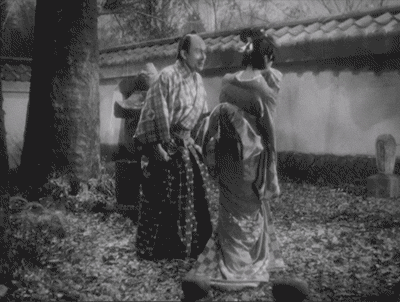
El cine samurái

El cine de samuráis era un género equivalente al western en Hollywood: duelos en los que en lugar de pistolas se utilizaban katanas, el honor como vehículo de la trama, la venganza para estructurar el drama y códigos de vestimenta singulares, entre otros.
El cine samurái fue encabezado por Akira Kurosawa. Sus mejores películas de este género podrían ser Yojimbo (1961) y Sanjuro (1962).

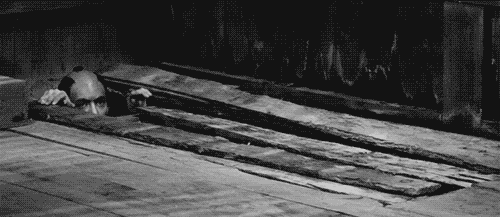
Akira Kurosawa
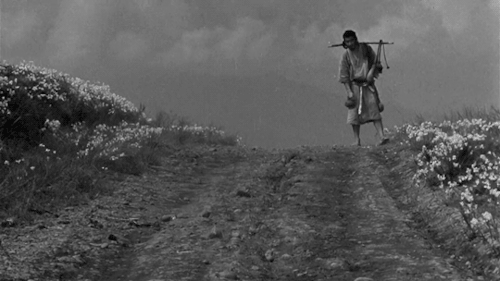
Kurosawa fue precursor de múltiples estilos cinematográficos, y su obra influyó también en blockbusters como La guerra de las galaxias (George Lucas, 1977). Algunas de sus grandes obras refieren a tragedias adaptadas de Shakespeare, como Trono de sangre (1957) y Ran (1985), aunque sus filmes más intimistas, como Ikiru (1952) y Dersu Uzala (1975), hablan de los tratados existenciales.
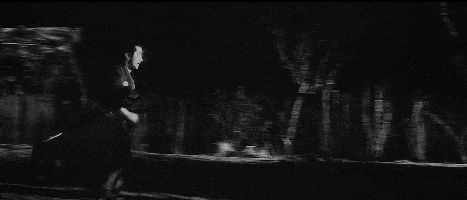
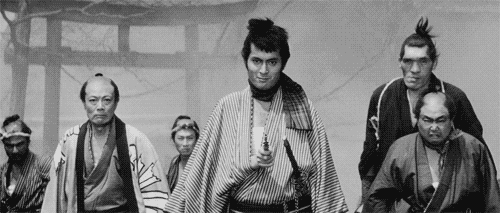
Shohei Imamura
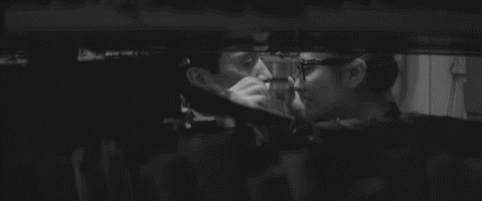
Destacado miembro de la nueva ola japonesa, este director representa la contraparte de Kurosawa, cuestionando el humanismo per se. Imamura retrata cómo el sistema económico transformaba al espíritu en Japón, con cintas como Los pornógrafos (1966), La balada de Narayama (1983), Lluvia negra (1989) y La anguila (1997).

Yasujiro Ozu

Ozu contaba historias sobre la clase media japonesa de posguerra. Con varias obras maestras, la mejor de ellas es La historia de Tokio (1953) que simplemente describe la manera como una pareja de viejos viaja a Tokio para visitar a sus hijos y descubrir que estos no tienen tiempo para dedicarles. El cine de Ozu siempre busca la lección moral con respeto, sin llegar a ser cursi.
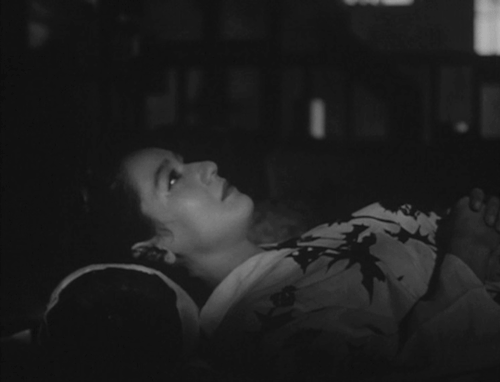
Cine vs la guerra
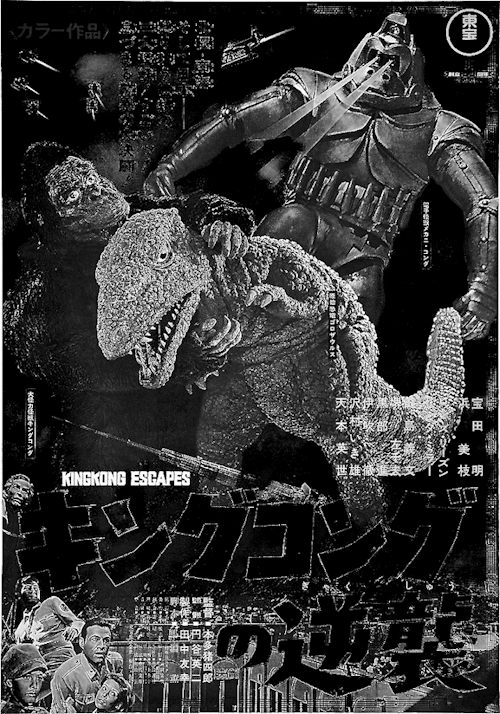
Dentro del cine japonés los dramas antibélicos también fueron de gran relevancia, particularmente los de Kon Ichikawa, siendo estos últimos potentes relatos socialmente responsables que crearon secuelas, por ejemplo El arpa birmana (1956). Sin estás cintas no habrían existido clásicos contemporáneos como La delgada línea roja (Terrence Malick, 1998) ó Cartas de Iwo Jima (Clint Eastwood, 2006). Sobre el cine antibélico japonés podemos hablar de la tendencia antinuclear, del cine de criaturas, comandada por Ishirō Honda y su contundente creación, el monstruo Godzilla, en 1954.
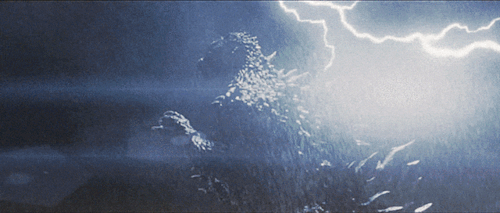
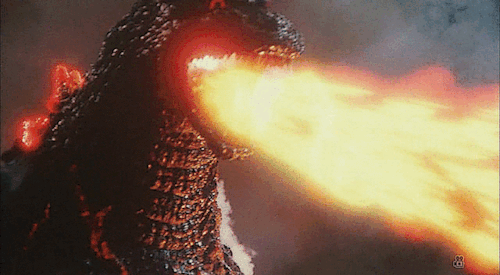
Otro género que existió en esta cinematografía desde finales de los 50 es el cine yakuza. Este correspondía al cine de gangsters de Hollywood; este género mostraba las costumbres de la mafia japonesa, un fenómeno cultural que tiene inspiración en la tradición samurái y sus códigos de honor. Con el paso del tiempo el cine yakuza terminaría siendo de carácter hiperviolento, con directores como Takashi Miike con cintas como Gozu (2003).
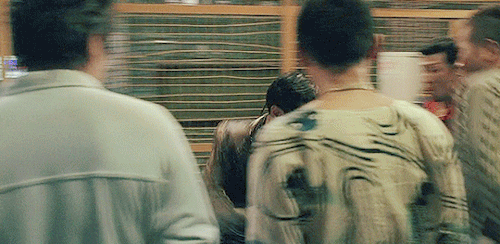

Seijun Susuki
Este cineasta se enfocó en el género yakuza y fue influencia de célebres directores, entre ellos Tarantino. Suzuki creó películas absurdas, a un frenético ritmo bebop, muy en deuda con el jazz, y empleaba los elementos de las cintas de yakuzas para hablar de la existencia humana.
Cine surrealista y de terror

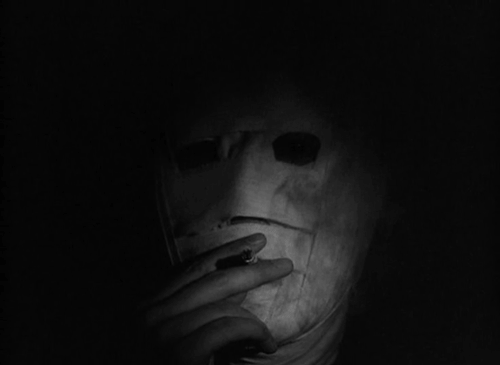
Hiroshi Teshigahara (1927-2001) es un director que mejor representa la propuesta del cine surrealista japonés. Cintas como La mujer de las dunas (1964) o Rostro ajeno (1966) exploran metafóricamente la oscura naturaleza del hombre. Otras películas que destacan en este género son la hermosa Kwaidan (Kobayashi, 1964) y Kuroneko (Kaneto Shindō, 1968).
Posteriormente, el director Nobuhiko Obayashi creó una nueva forma de hacer cine, combinando el arte pop con el cine de terror (de él destaca House, estrenada en 1977, que fue la cinta que detona este género de películas pop/terrror). Por otro lado, Hideo Nakata, con El aro (1998), influyó en la forma de hacer cine de terror contemporáneo, y junto con Ju-on (2000-2003), de Takashi Shimizu, pusieron a Japón en el mapa del cine comercial.

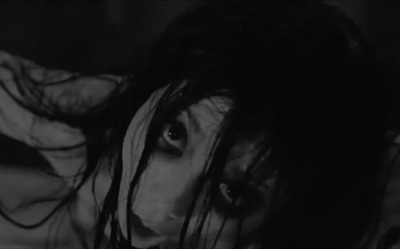
Ultraviolentos
Pronto aparecieron estilos en el cine japonés ultraviolentos debido a la notable insensibilización del público. Carentes de historia en muchos casos, estas películas sólo buscaban sembrar praderas de sangre. Aquí también surgieron directores destacados, como Miike (Audition) y Sion Sono (El club del suicidio).
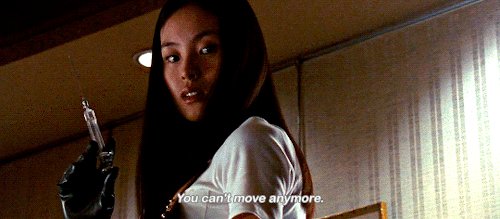
La animación

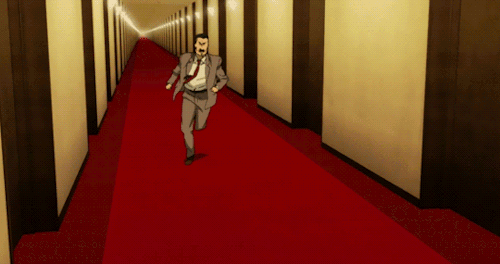
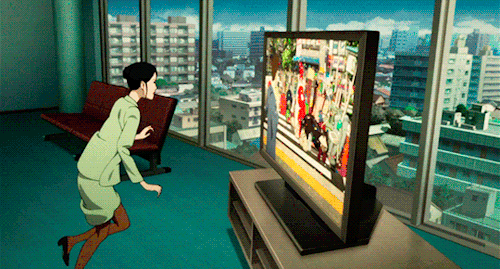
La animación japonesa es uno de los géneros más representativos del cine japonés. Uno de los más grandes exponentes de este género es Hayao Miyazaki, cuya obra destaca por resaltar los valores humanos con base en una técnica excepcional que conecta con el público a nivel estético. Cintas imperdibles son La princesa Mononoke (1997) o El viaje de Chihiro (2001). Un par de autores más para tomarse en cuenta: Kastsuhiro Ōtomo (Akira) y Satoshi Kon (Paprika).
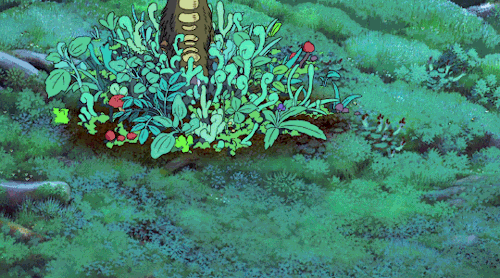
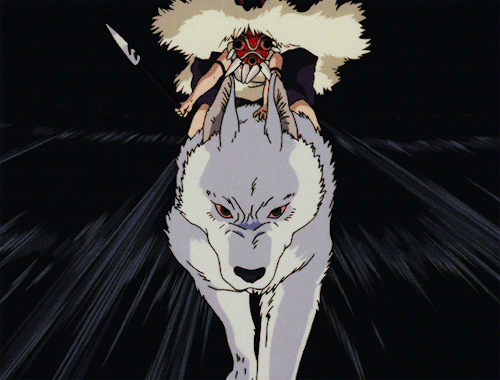
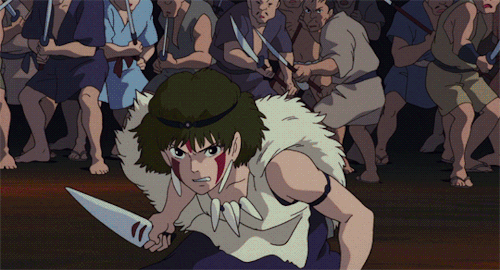
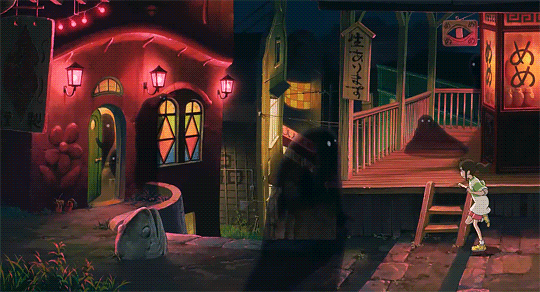


Panorama actual
Actualmente, Naomi Kawase (El bosque de luto, 2007) es una cineasta que ha tenido mucho auge en Japón; iniciada en el documental, emplea el acercamiento a lo real para esbozar haikus emocionales. Por otro lado, el director Hirokazu Kore Eda (De tal padre tal hijo, 2013) se ha convertido en uno de los más reconocidos de Japón. Con emotivos retratos de las relaciones humanas en la insensible era posindustrial, ambos directores detonan emociones potentes en el espectador con recursos modestos, denotando que el haiku sigue más presente que nunca en el corazón del cine japonés.

1 note
·
View note